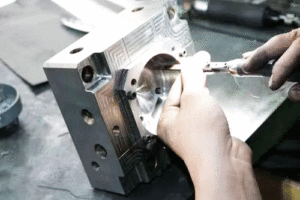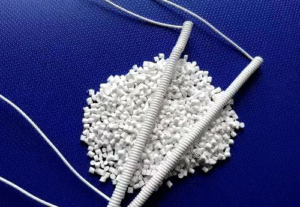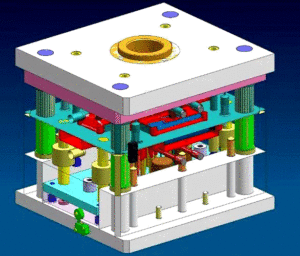
The Reason for the Burrs on Injection Molding-parting Surface
The followings are the factors generating parting surface burrs and also some solutions:
Mechanical Equipment
(1) The clamping force of the molding machine is insufficient.
When selecting an injection molding machine, the rated clamping force of the machine must be higher than the tension formed by the longitudinal projected area of the injection molded product during injection. Otherwise it will cause mold expansion and parting surface burrs.
(2) The mold clamping device is not well adjusted.
And the toggle mechanism is not straight. While the clamping units are not balanced left and right or up and down. Then, the parallelism of the mold cannot be achieved. All of which will cause the situation that one side of the mold is tightly closed while the other side is not closely attached. There will be parting surface burrs during injection.
(3) Unparallel
The mold itself is not parallel well, or the installation is not parallel. Maybe the template is not parallel, or the tension rod is unevenly distributed and deformed. These will cause the untight mold clamping and the parting surface burrs.
(4)
- The non-return ring is severely worn.
- The springof spring nozzle fails.
- The barrel or screw is worn too much.
- The inlet cooling system fails to cause “bridging” phenomenon.
- The barrel set injection volume is insufficient.
- The cushion is too small, etc.
It may cause the parting surface burrs to appear repeatedly, and the parts must be repaired or replaced in time.
Mould aspect
Poor precision of mold parting surface. The poor flatness of the mold core causes gaps when the mold is clamping, resulting in burrs on the parting surface.
Process aspect
(1) The injection pressure is too high or the injection speed is too fast.
Due to the high pressure and high speed, the opening force to the mold increases and causes flash. The injection speed and injection time should be adjusted according to the thickness of the product. The thin product should be filled quickly at high speed, and no injection after it is filled. While the thick product should be filled at low speed.
(2) Excessive feeding volume causes burrs on the parting surface.
You mustn’t inject too much melt in order to prevent the depression, such a depression may not be “filled”. Then, the parting surface burrs will appear. This situation should be resolved by extending the injection time or holding time.
(3) Overly high temperature of the barrel and nozzle or the mold will reduce the viscosity of the plastic and increase the fluidity. That will cause burrs on the parting surface when smoothly entering the mold.
Raw materials
(1) If the plastic viscosity is too high or too low, there may be parting surface burrs.
For the plastics with low viscosity, like nylon, polyethylene, polypropylene, etc., we should increase the clamping force. While the plastics with strong water absorption or water-sensitive function will greatly reduce the flow viscosity at high temperature. And it will increase the possibility of parting surface burrs. These plastics must be thoroughly dried. The viscosity of plastics that are mixed with too much recycled materials will also decrease. When necessary, replenish the retained components.
If the viscosity of the material is too high, the flow resistance will increase. Next, a large back pressure will increase the pressure of the cavity, resulting in insufficient clamping force and producing parting surface burrs.
(2) Uneven particle size of plastic raw materials will cause the feeding amount to vary, and parting surface burrs will appear.


